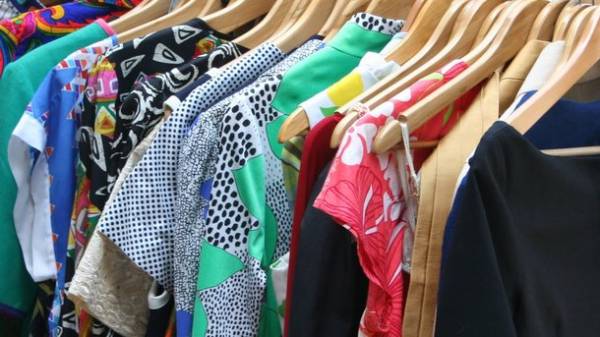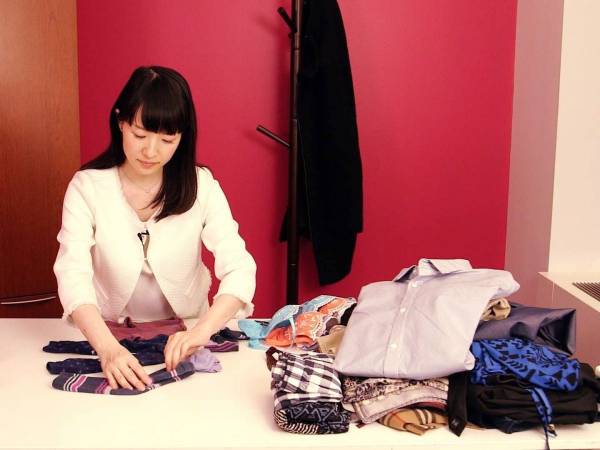
The more things produced in the world in the “age of consumption”, the more humanity gets tired of “fast fashion”. There are more people who purchase only minimum required items, and all available money is spent on experiences: traveling, socializing with friends, workshops, sports clubs, etc. On this wave was declared by a new movement — the “Year without shopping” under the motto: “Collect experiences, not things”.
The participants are grouped into groups and are going year to do those things that they already have without buying anything new. And to support each other, plan to exchange items of clothing that one is not suitable but may be useful to others.
Marina Tarasova from Kiev — one of those who refused for a year from purchase. “It all started with the fact that I tried to analyze where it is going so much money, she says. — There was a feeling that my spending has ceased to be aware: purchases were made, only to experience a few moments of euphoria at the checkout. And then I often didn’t even have time to get them out of the bags they were stored! I was painful to watch. And I decided to enjoy things I already have”.
Kiev, psychologist Ludmila Novitskaya considers such trends are very useful because people not only refuse to buy, but also come together with the same interests. “Different social groups — a set of attributes of success, — says the psychologist. — So if people have created a group where success is the ability to survive the year without shopping is a great way to get out of battle with normal self-esteem”.
Why is this happening
Psychologist Svetlana Petkanic explains the appearance of such currents that the increased standard of living. “Before, things were in short supply and had high value in the eyes of the people, — says Svetlana. Now a lot of things. And when basic needs are secured, the next level of higher needs — travel, experience and leisure. But, even following the course, it is better not to overdo it: if you have declared a “detox”, but, for example, saw the dress dream — buy, so you do not regret”.
SEE ALSO
- How to equip a dressing room in his apartment
Ecology: care for the planet
Making unnecessary purchases, we throw away hard earned money, and together with them — and the resources of the planet: according to research by The Huffington Post, people each year using only 80 billion items of clothing produced 150 billion. Vicious circle: the acquisition gives “dose” of joy, then she leaves and want new purchases… So if you decide to “Rosmorflot” Cabinet — do not throw on the scrap heap of good clothes and shoes: find them a new owner.
Marie Kondo: not happy — get out of my house
If the housing is good very much and want him not just to regulate but also to reduce — you should use “specialist cleaning” by Marie Kondo. It offers all the things to evaluate from the perspective of the feelings that they cause. Take each in hand and listen to your emotions: if emotions are positive — leave. But if indifferent (for example, cartoonize, a gift for a wedding, and standing for a year in the package) — emissions: they take up space, and joy bring. Cartons of phone, laptop and other gadgets that warranty needs to be put in one place and throw as soon as the warranty ends. Also, you should keep all documents, vouchers, checks, etc. Marie Kondo believes that if your entire house will consist of “positive” things — you yourself will feel different, because nothing will bore and annoy.
Get rid of old things Marie also advises a special way. Take an old thing and mentally thank her for what she served you — and then break up with her and forget. Of course, not all of its method is suitable, because the Condo is quite categorical and offers everything that are not happy, just throw it away, without giving a chance to find a good and whole things a new owner.
HOW TO RESTORE ORDER. In addition to the global “raschleneniya” Marie has developed and its storage system. You must separate all your clothes by category. Skirts and sweaters not coexist on the same shelf mixed — each thing should get its own individual angle. Stacked rectangles and put on the shelf vertically to obtain a complete overview of all available. Things on hangers, she advises not to share the seasons, and hang up, sorting by density — from coats and jackets to light summer dresses. Small items — underwear, socks, scarves and so on. — coiled into rolls. So they don’t take up much space and immediately see where that is located.

The strategy backfired hanger
To understand which things you don’t need, try the strategy the opposite hanger. All the clothes hang on a hanger so that the hooks looked at you. Wearing some thing — put it in the closet, hanging a hook from yourself. After a few months you will be able to determine what kind of clothes do wear, just by looking at the direction of the hooks — and even be surprised at how many unnecessary things the money is spent.
How not to buy too much
- “Stranger test”
Before you buy something, imagine that you were offered the same amount of money or a thing free of charge. What would you choose? If the money — so, not so you and she need.
- Slice of life
Set the value of another “little dresses” in the amount of time you spend, earning money for its purchase. Are you willing to pay for the purchase of one day of your life? If not — you don’t need it.
- Short fun
The possession thing is a joy. But remember: more things and more purchases — the less it lasts the satisfaction of owning.
- The benefits outweigh the cost
If the purchase is expensive, but will affect the quality of your life, do not spare money. If it only takes time: it needs to be stored, cared, dust, etc., then it’s hardly necessary.







